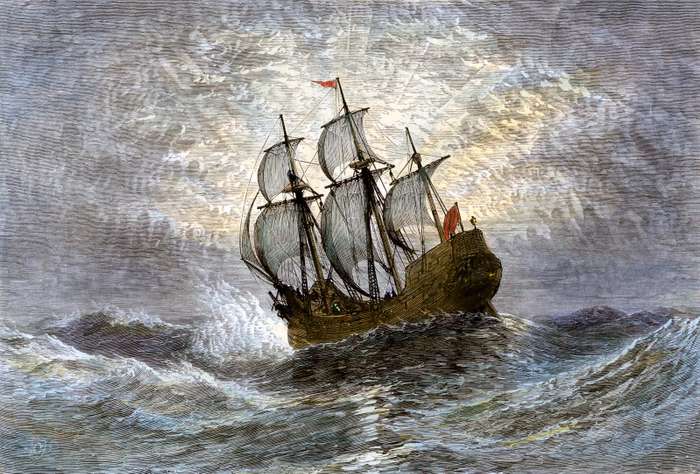
Edward Doty, our distant ancestor, had the distinction of not only coming to North America on the historic Mayflower voyage of 1620, he also signed one of America’s seminal documents: the Mayflower Compact. Before we get overly excited, though, we need to mention a couple of things.
One is that no copy of the original document survives. Therefore, unfortunately we can’t see his signature. But considering he signed other legal documents, including his will, with “his mark,” he appears not to have learned how to write and we wouldn’t see much in the way of a signature anyway. Nevertheless, all accounts of the document give him credit for being among the 41 men who signed the pact.
The other thing to consider is that the document was drafted by the Saints, or Puritans, rather than by the Strangers, or non-Puritans. So Eddie, a Stranger, wasn’t necessarily a proponent of the document.
With those caveats, let’s take a look at what we know of the document and its significance.
When the Mayflower arrived at the North American coast it found itself at Cape Cod, about 260 miles north of its planned destination near the Hudson River. The planned landing was in the northern reaches of the then Virginia Colony, covered under the Virginia Company charter granted by King James I of England. The ship attempted to head south to this planned destination, but winter storms, dangerous shoals, and dwindling food supplies forced it to return to Cape Cod Bay where it dropped anchor near present-day Provincetown on November 21, 1620.
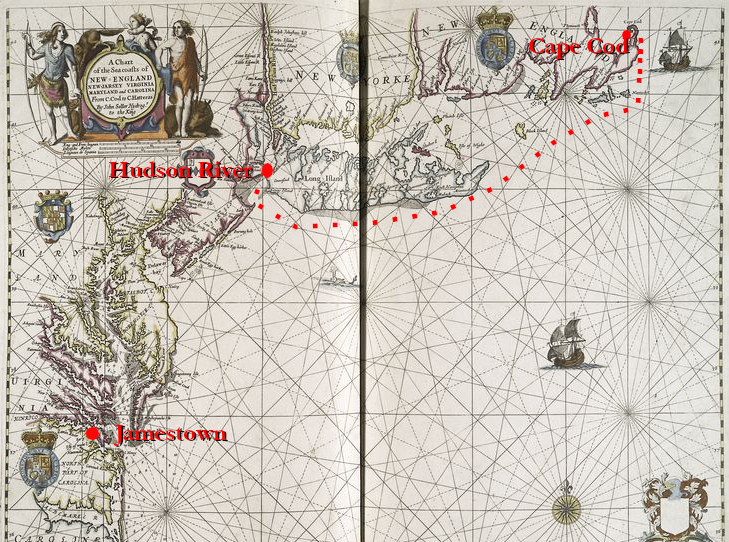
Seeing as the ship landed outside of the Virginia Company charter, there was rumbling among the Strangers that they were not bound by the charter, and they threatened to leave the group and settle on their own, as documented in William Bradford’s journal, below.
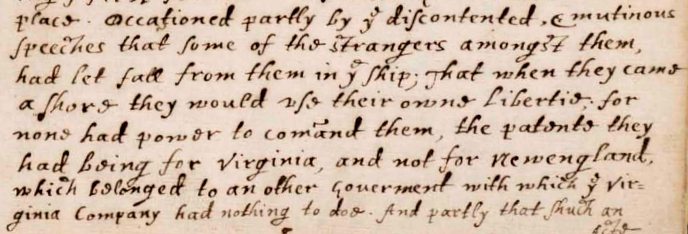
— Excerpt of William Bradford’s journal “Of Plimoth Plantation” dating to the period 1630-1651.
According to the Encyclopedia Britannia, “To quell the conflict and preserve unity, Pilgrim leaders drafted the Mayflower Compact before going ashore. The brief document bound its signers into a body politic for the purpose of forming a government and pledged them to abide by any laws and regulations that would later be established ‘for the general good of the colony.’”
Although the original document didn’t survive, a transcription is found in William Bradford’s journal, below.
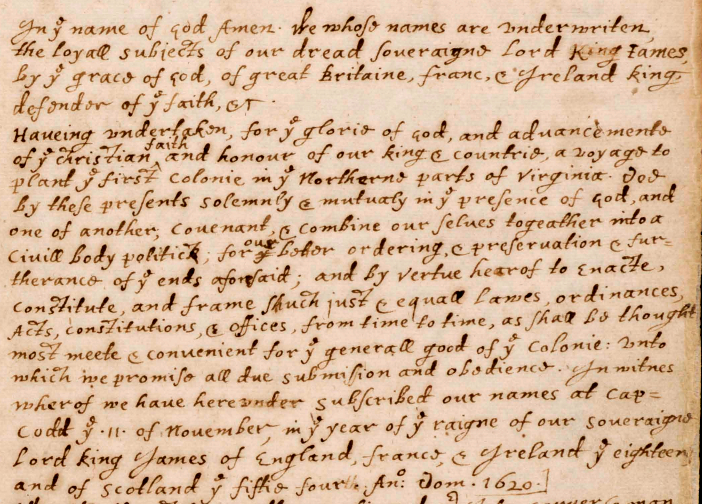
— The Mayflower Compact as reported in William Bradford’s journal
The signing of the document has been the subject of a number of depictions, but my favorite is the The Mayflower Compact, 1620, painted by Jean Leon Gerome Ferris in 1899. In it a young man in working class dress is seen signing the document with a quill pen. Given that Edward Doty was a servant, i.e., was working class, and about 21 years of age, I like to think, perhaps fancifully, that the painting captures the moment Doty put his mark to the document.
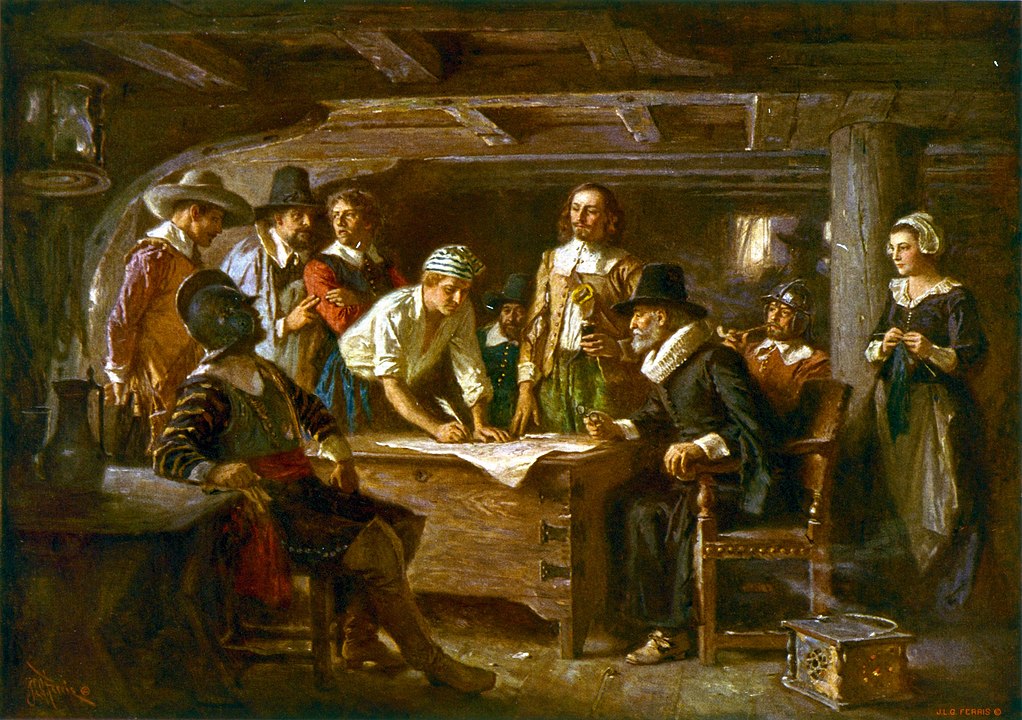
With Eddie being a Stranger and possibly even among the “discontented and mutinous,” it’s not clear if he signed enthusiastically, willingly, indifferently, or under duress.
In A Journal of the Plantation at Plymouth, the editor notes that not all of the man-servants on board the Mayflower signed the Compact. “It is possible that such of the servants only as, on the one hand, specially deserved the honor, or, on the other, especially needed the restraint, of becoming parties to such an agreement, were invited to sign it; to the former of which classes one might fancy John Howland to belong, and to the latter, Edward Doten [Doty] and Edward Leister.”[2]
As I look at the painting I wonder if the painter intentionally captured various looks of smugness, suspicion, and relief on the faces of the Pilgrim witnesses as Doty (again, my fanciful speculation) signed the document.
The following post will look into Doty’s checkered life in the new world, from the time he helped man the Mayflower exploratory party in 1620 to his death in 1655.
Part 4: Edward Doty: A History of “Firsts”
Footnote(s)
[1]. England adopted the Gregorian calendar in 1751, essentially adding 10 days on the current calendar to old Julian calendar dates. The Compact was signed, therefore, on 21 November 1620 according to modern calendars.
[2]. Henry Martyn Dexter, ed, Mount’s Relation, or Journal of the Plantation at Plymouth (Boston: John Kimball Wiggin, 1865), pg 9.
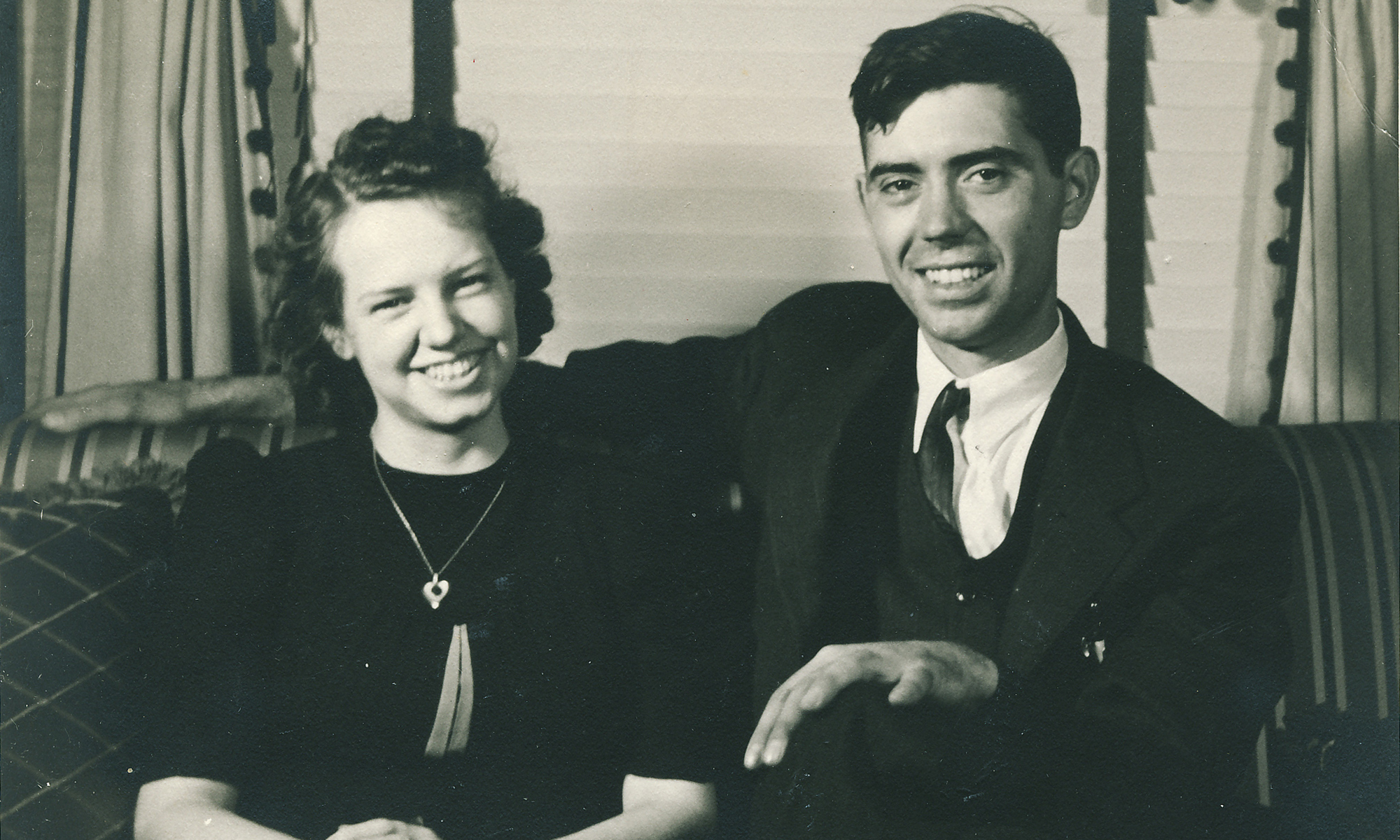
One Reply to “Signer of the Mayflower Compact”